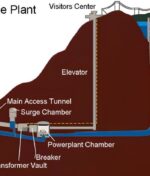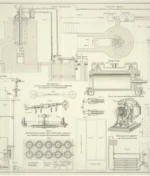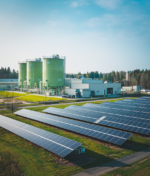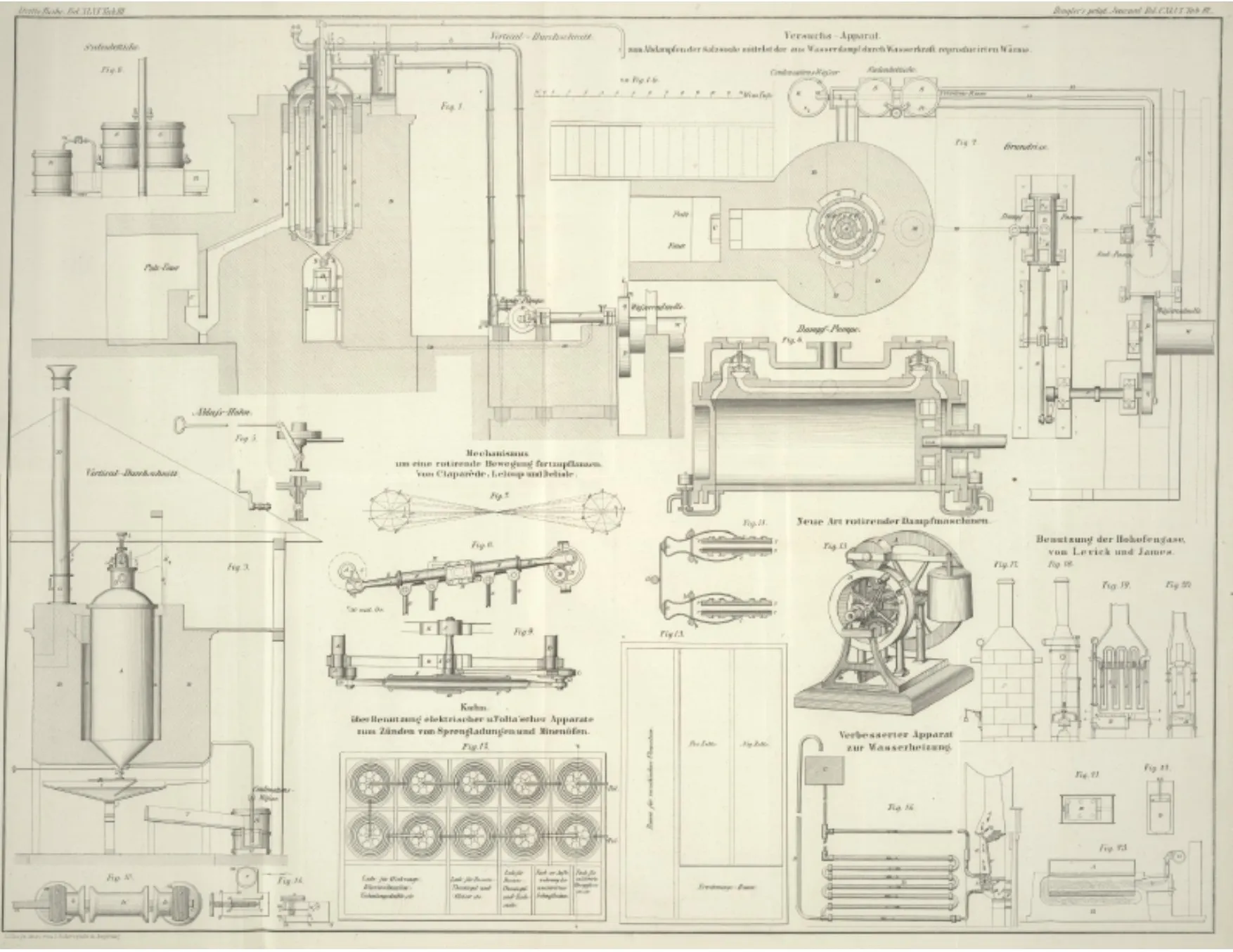
Heat Pumps
With increasing environmental awareness, interest in the use of renewable energy sources is rapidly increasing. In this context, heat pumps have become popular again among renewable energy solutions. Heat pumps, which first came to the fore in the 1980s, could not become widespread due to technical inadequacies at that time. Today, however, these technical problems have been solved and heat pumps have re-entered our lives as environmentally friendly, reliable and economical heating systems. For example, one third of new buildings in Switzerland use heat pumps powered by electricity. In this context, heat pumps offer efficient energy-saving solutions for both heating systems and domestic water heating.
History of Heat Pump
The basic theory of the heat pump started with the Carnot cycle, one of the most important principles of thermodynamics, proposed by Nicolas Leonard Sadi Carnot in 1824. Carnot's theory showed that the mechanical power generated by a steam engine could be reversed to transfer energy between hot and cold environments. This principle forms the basis of heat pump and refrigeration technologies: Heat can be transferred from a hot medium to a cold medium or from a cold medium to a hot medium.
About 26 years after Carnot's theory, Lord Kelvin proposed in 1850 that refrigeration devices could be used for heating. This idea was an important step in making heat pump technology practically feasible. However, the first real application of the heat pump was realized by Peter von Rittinger in 1855. The Austrian engineer Rittinger succeeded in applying heat pump principles to industrial processes such as water evaporation and salt extraction, thus taking the first steps in this technology.
Rittinger's work laid the foundations of modern heat pump technology and paved the way for the energy efficient systems used today in home heating, cooling and hot water production. Heat pumps have continued to develop as devices that provide significant energy savings both in homes and industry, shaped by the theoretical and practical contributions of Carnot and Rittinger.
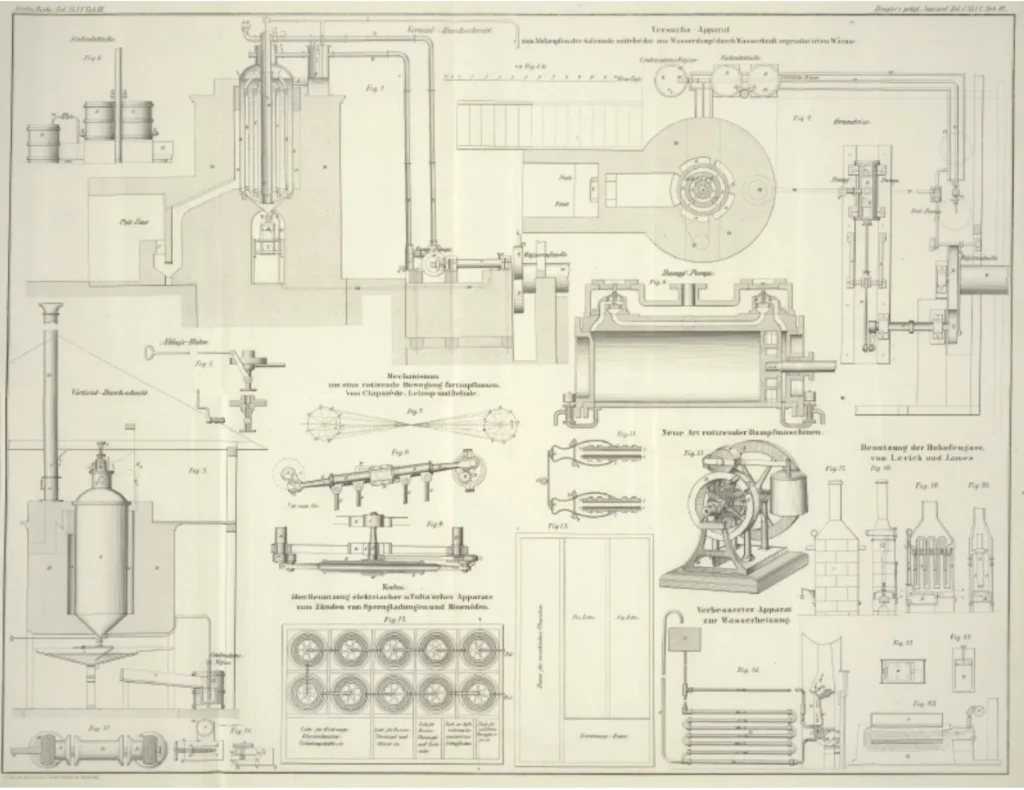
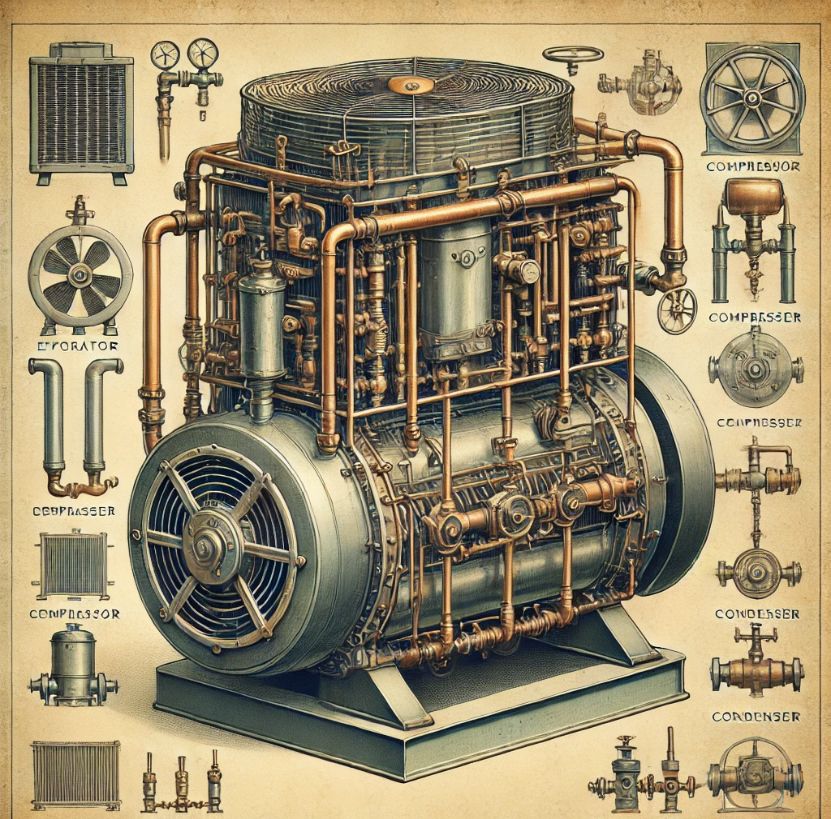
What is a Heat Pump?
A heat pump is an electrically powered system that works on the principle of transferring heat energy from one medium to another. When the necessary conditions are met, large amounts of energy can be made available at low costs. Although the concept of a heat pump is new to many people, the refrigerators, air conditioners and freezers we use in daily life are based on the same principle. These devices work by moving heat from one medium to another, which is why they are considered heat pumps.
The main purpose of a heat pump is to heat a medium, but it can also be used for cooling purposes. This system moves heat from a low-temperature energy source to the space to be heated. While the low-temperature energy store is usually supplied from natural sources such as ambient air, well water or soil, the areas to be heated can be a variety of structures such as houses, workplaces, greenhouses and farms.
Isı pompalarının performansı, COP (Coefficient of Performance – Performans Katsayısı) adı verilen bir faktörle ölçülür. Bu performans katsayısı, kullanılan enerji kaynağına (hava, su, toprak) ve ısı pompasının kalitesine bağlı olarak değişiklik gösterir. Genel olarak, COP değeri 2,5 ile 5 arasında değişir. Örneğin, COP değeri 5 olan bir ısı pompası, 1 birim elektrik enerjisi kullanarak 5 birim ısı enerjisi üretebilir. Bu, ihtiyaç duyulan ısının yalnızca %20’si için elektrik enerjisi ödenirken, geri kalan %80’i çevreden ücretsiz olarak sağlanır.
Heat pumps consist of four main components. These components are
- Evaporator (vaporizer),
- Compressor
- Condenser (condenser)
- Expansion valve. These components ensure that the system operates efficiently by circulating the fluid that carries the heat.
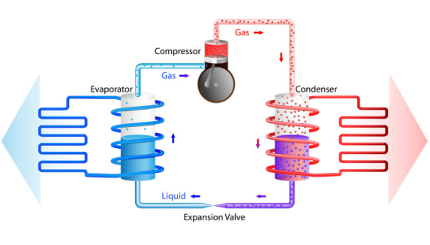
1. Evaporator (Vaporizer): This is the part where heat energy is extracted from the air. The refrigerant circulating in the evaporator can evaporate by taking heat even at low temperature. Thus, heat energy is transferred from the external environment to the inside.
2. Compressor: The vaporized refrigerant is compressed by the compressor. The compressor increases the pressure and temperature of this vapor, allowing it to be transmitted at a higher temperature to the environment to be heated.
3. Condenser (Condenser): The compressed refrigerant cools down in the condenser and releases its heat energy to the medium to be heated as it becomes liquid. At this stage, the heat contained in the refrigerant is transferred to the interior of the house, water or another heating medium. The condenser radiates the heat and heats the environment.
4. Expansion Valve: The pressure of the condensed refrigerant is reduced through the expansion valve. This drop causes the temperature of the fluid to drop and the refrigerant is directed back to the evaporator. The cycle starts again and the system runs continuously.
This high efficiency of heat pumps offers great advantages both environmentally and economically.


